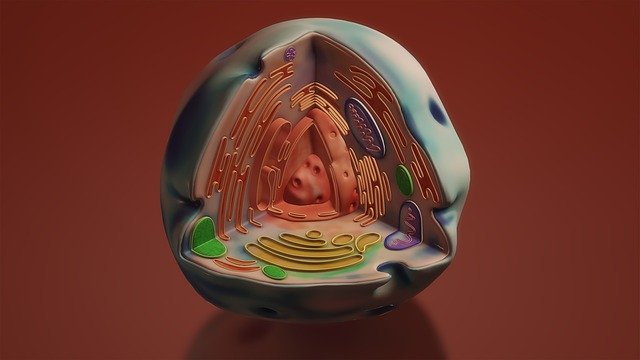
The cytoplasm is a cellular sector.
The region of a cell that is between the nucleus and the plasma membrane is called cytoplasm . In the cytoplasm it is possible to recognize various cellular organelles .
Let us remember that a cell is the essential unit of a living being with the capacity for independent reproduction. In its nucleus , which in the case of eukaryotic cells is located in the center, it houses the genetic material. The plasma membrane , for its part, is a layer composed of two sheets of proteins and lipids that delimits and gives shape to the cell.
Characteristics of the cytoplasm
Returning to the idea of cytoplasm, we can say that it is the cellular sector that is located between the plasma membrane that surrounds the cell and the nucleus that is located in the center. The cytoplasm is a colloid formed by a liquid called cytosol and the different organelles it contains.
In the cytoplasm, therefore, are the organelles, which move and develop functions in the cytosol. It is usually differentiated between the endoplasm (a dense area of the cytoplasm, close to the nucleus of the cell) and the ectoplasm (a region of lower density than the cytoplasm and close to the plasma membrane). Organelles, such as mitochondria , ribosomes , vacuoles , and the Golgi apparatus , are distributed in the endoplasm.
It should be noted that the membranes that make up the endoplasmic reticulum (smooth and rough) and the filaments that give rise to the cytoskeleton are also detected in the cytoplasm.
It is also important to mention that prokaryotic cells , which lack a delimited nucleus, also have cytoplasm.

It can be said that the cytoplasm is a colloid composed of a fluid called cytosol and various organelles.
Gaucher disease
There are various disorders associated with the cytoplasm, regardless of the degree to which it is affected, and the congenital disease without the presence of genetic dominance known as Gaucher disease is one of them. The cause of its appearance is an excessively low amount of the enzyme beta-glucosidase, which leads to an accumulation of glucocerebroside in the cells belonging to the reticulo-endothelial system , also known as mononuclear phagocytes .
Gaucher disease is considered rare, and belongs to the group of lipidoses , hereditary metabolic disorders that cause the accumulation of large amounts of lipids in certain cells and tissues, in addition to belonging to the largest group of lysosomal storage diseases or by lysosomal storage .
Among the main symptoms are hepatomegaly (an abnormal increase in the dimensions of the liver), splenomegaly (the splenic structure enlarges beyond its normal limits) and certain blood disorders.
Glucocerebrosides are very important components of the cell membrane of nerves and muscles, and they accumulate in Gaucher cells, which have a very particular appearance: they are large in size, their nucleus does not move and their cytoplasm looks like a "crumpled cellophane paper." These cells can be seen especially in the liver, lymph nodes and bone marrow.
Precisely, the very peculiar appearance of the cytoplasm serves in the process of diagnosing the disease, since the techniques most used in this context have among their main objectives the search for macrophages with these characteristics, that is, Gaucher cells.
Treatment of this disorder that affects the cytoplasm
It is worth mentioning that macrophages are the cells of the immune system that are located in the tissues and are responsible for consuming foreign material in the body. Its origin is the cells of the bone marrow that, through their division, give rise to monocytes that cross the capillaries and penetrate the connective tissue.
Regarding the treatment of Gaucher disease, specialists should in all cases include blood transfusion, analgesics, oral bisphosphonates, and calcium supplementation.
